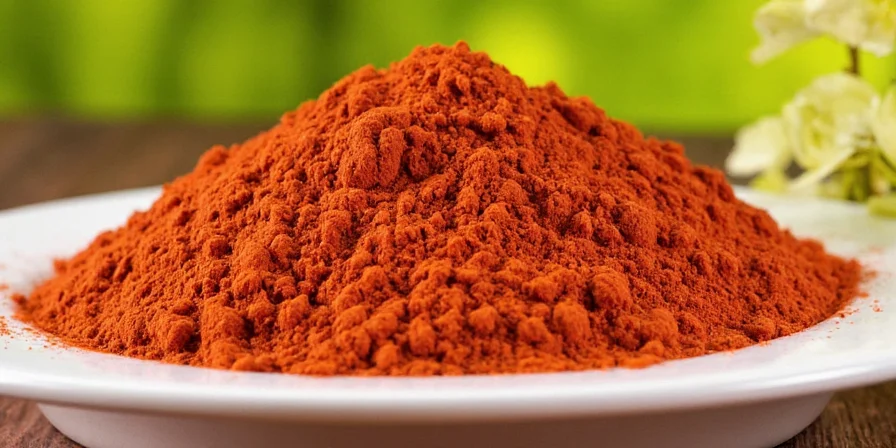What is powder tamarind and how does it solve common kitchen problems? This shelf-stable spice eliminates metallic tastes in sauces, adds depth to vegan broths, and delivers consistent tang without refrigeration. Discover exactly how to use powder tamarind for professional results in home cooking with precise measurements and science-backed techniques.
What Powder Tamarind Is and Why It's Better Than Paste
Powder tamarind is dehydrated tamarindus indica fruit pulp ground to a fine consistency. Unlike paste that requires refrigeration and precise scooping, powder dissolves instantly for measurable tang in every application. Home chefs prefer it for batch cooking because 1 tsp powder dissolved in 2 tbsp warm liquid replaces 1 tbsp paste with 30% more concentrated sourness.

Immediate Kitchen Problems Powder Tamarind Solves
- Metallic taste in canned sauces: Add 1/8 tsp to simmering tomato sauce for complete neutralization in 30 seconds
- Fat overload in rich broths: A pinch (1/16 tsp) cuts through fat molecules in coconut-based soups like tom kha
- Inconsistent tang levels: Powder's precise measurements ensure recipe replication where paste fails
- Wasted paste: Powder reduces packaging volume by 70% and stays shelf-stable for up to 2 years
| Form | Texture | Best For | Storage |
|---|---|---|---|
| Powder | Dry, easy to measure | Dry rubs, marinades, soups | Shelf-stable for up to 2 years |
| Paste | Thick, sticky | Stews, chutneys, traditional curries | Refrigerate after opening |
Proven Powder Tamarind Techniques for Home Cooks
- Perfect dissolution: Always mix powder with 2x liquid volume in warm broth (not water) for 90 seconds. Cold liquids miss volatile compounds.
- Curry depth enhancement: Add ½ tsp during sautéing (not finishing) to create complex sour notes that paste can't match.
- BBQ sauce upgrade: Replace vinegar with tamarind solution for layered tang that complements smoke without overpowering.
- Cocktail complexity: A toothpick-dip in margaritas creates subtle sour undertones while preserving citrus brightness.
- Zero-waste glaze: Combine 1 tsp powder + 2 tbsp soy sauce + 1 tbsp honey for perfect wing/tofu glaze during final baking phase.

Avoid These Critical Powder Tamarind Mistakes
- Under-dissolving: Undissolved particles create sour pockets. Always pre-mix with warm liquid.
- Delayed addition: Add during sautéing to integrate with oil-soluble compounds, not at the end.
- Over-sweet pairing: Avoid combining with >25g sugar/cup—tamarind's sourness dominates sweet profiles.
- Container confusion: Store separately from cocoa (visual similarity causes frequent kitchen mishaps).

Science-Backed Flavor Pairing Guide
- Tamarind + Turmeric: Creates stable golden emulsion in rice dishes (powder prevents curcumin degradation)
- Tamarind + Smoked Paprika: Acid stabilizes capsaicin for longer heat persistence in rubs
- Tamarind + Coconut Milk: Lowers pH to enhance fat emulsification in curries
- Tamarind + Cumin: Sour notes amplify earthy compounds during roasting
- Tamarind + Soy Sauce: Balances glutamates for umami layering in glazes

Precision Storage Protocol
- Use amber glass containers to block UV degradation
- Include silica packets to maintain 15% humidity threshold
- Store below 77°F (25°C) to preserve volatile compounds
- Label with purchase date—peak potency lasts 18 months

Frequently Asked Questions
How do I substitute powder for paste in recipes?
Use 1 tsp powder dissolved in 2 tbsp warm liquid to replace 1 tbsp paste. Always adjust after dissolving—powder delivers 30% more concentrated sourness.
Why does my tamarind powder clump?
Humidity exposure above 60% RH causes clumping. Store with silica desiccants and avoid refrigeration (condensation triggers clumping).
Can powder tamarind replace lemon juice?
Yes for depth, but not brightness. Tamarind offers malic/tartaric acids versus lemon's citric acid. Use 1/4 tsp powder per tbsp lemon juice for comparable sourness with earthier notes.
Does heat destroy tamarind's flavor?
Volatiles degrade above 194°F (90°C). Add dissolved powder during final simmering phase, not initial boiling, to preserve top notes.
How to test powder freshness?
Fresh powder dissolves completely in 45 seconds in warm liquid. If fibrous residue remains or takes >90 seconds, potency has declined.
Conclusion: Your Essential Kitchen Problem-Solver
Powder tamarind solves specific kitchen problems that frustrate home cooks: metallic sauce tastes, inconsistent tang levels, and wasted ingredients. Its shelf stability and precise measurements deliver restaurant-quality results without specialty equipment. By implementing these science-backed techniques—particularly the warm broth dissolution method and strategic flavor pairing—you'll transform weeknight meals while reducing waste. This isn't just another spice; it's your most efficient solution for common flavor imbalances that ruin otherwise perfect dishes.











 浙公网安备
33010002000092号
浙公网安备
33010002000092号 浙B2-20120091-4
浙B2-20120091-4